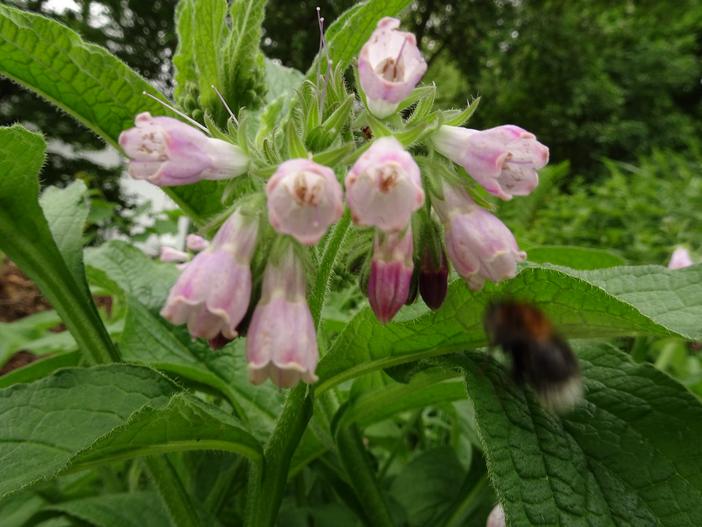Common Comfrey
(Symphytum officinale)
Common Comfrey (Symphytum officinale)
/
/

Dr. Hans-Günter Wagner
CC BY-SA 2.0









































































Estimated Native Range
Summary
Common Comfrey is valued for its use in organic gardening, particularly as a compost activator due to its high levels of nitrogen. It is also used in herbal medicine, although it should be used with caution due to the presence of toxic pyrrolizidine alkaloids. In cultivation, it thrives in full sun or part shade and prefers medium amounts of water. It is adaptable to various soil types, whether slow, medium, or fast-draining. While it can be a beneficial plant, Symphytum officinale is potentially invasive in some regions, including the United States, and can outcompete native flora. Gardeners should check local regulations before planting to prevent unintended ecological impacts.CC BY-SA 4.0
Plant Description
- Plant Type: Herb
- Height: 1-3 feet
- Width: 0.8-2.5 feet
- Growth Rate: Rapid
- Flower Color: Purple
- Flowering Season: Spring, Summer
- Leaf Retention: Deciduous
Growth Requirements
- Sun: Full Sun, Part Shade
- Water: Medium
- Drainage: Slow, Medium, Fast
Common Uses
Bee Garden, Butterfly Garden, Deer Resistant, Drought Tolerant, Edible*Disclaimer: Easyscape's listed plant edibility is for informational use. Always verify the safety and proper identification of any plant before consumption., Potted Plant
Natural Habitat
Damp grassy places, riverbanks, ditches, moist meadows, and woodlands in Europe and Siberia
Other Names
Common Names: True Comfrey, Healingherb, Quaker Comfrey, Boneset, Knitbone, Consound, And Slippery-Root, Cultivated Comfrey, Slippery-Root, Boneset
Scientific Names: , Symphytum officinale, Symphytum molle, Symphytum patens, Symphytum coccineum, Symphytum elatum, Consolida major, Symphytum album, Symphytum ambiguum, Symphytum commune
GBIF Accepted Name: Symphytum officinale L.